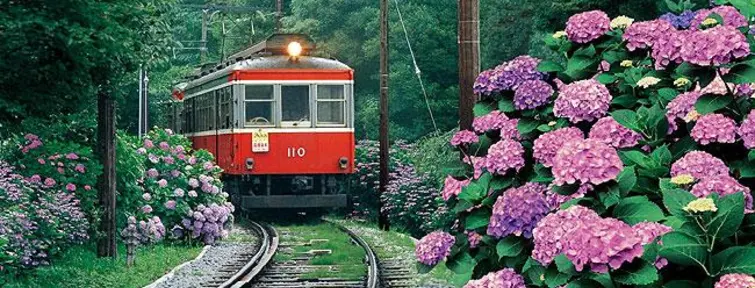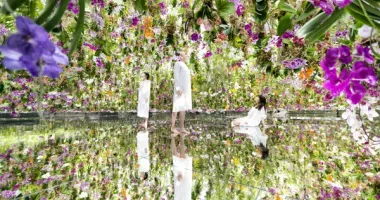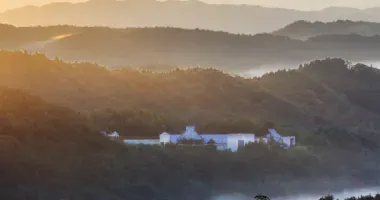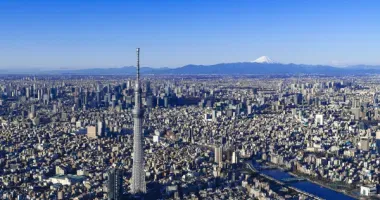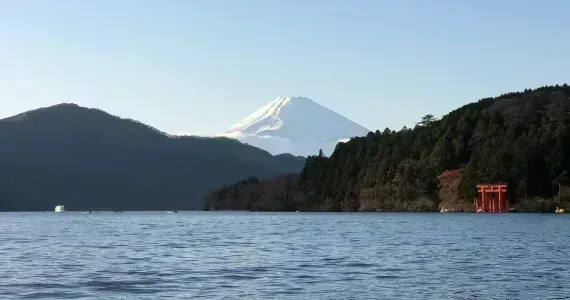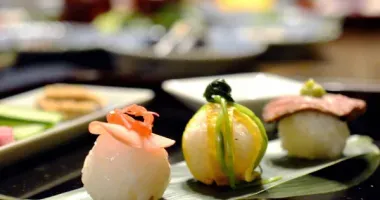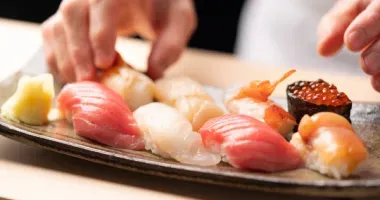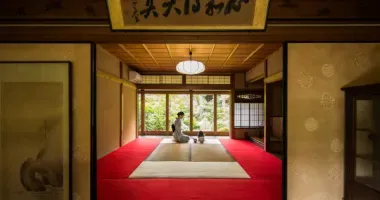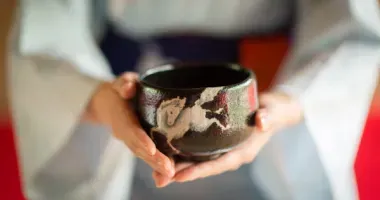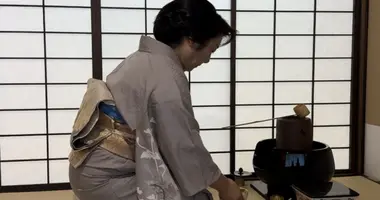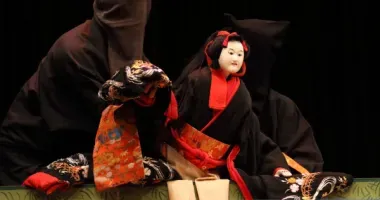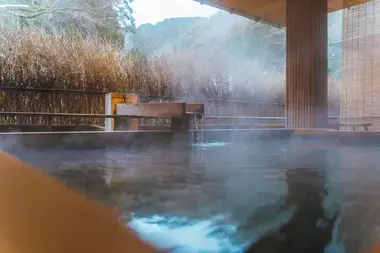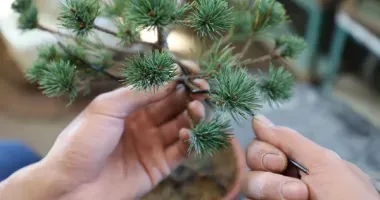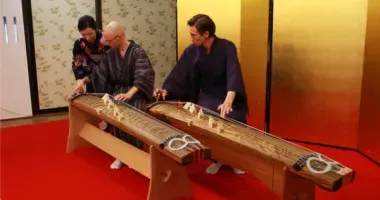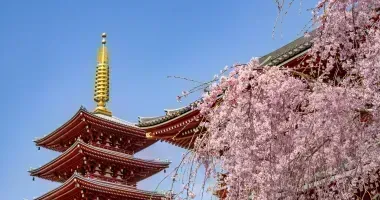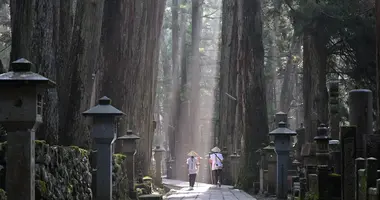Cosa fare durante la stagione delle piogge? 梅雨の日でも楽しめるアクティビティ
- Pubblicato il : 17/06/2017
- Per : K.C.
- Youtube
Giappone in qualsiasi condizione atmosferica!
Da giugno a luglio è Tsuyu , la stagione delle piogge in Giappone. Se si visita le isole in questo periodo dell'anno, state pure tranquilli: è del tutto possibile godere i paesaggi e divertirsi.
Scopri la nostra selezione di attività per mantenerti asciutto quando c'e' Tsuyu, la stagione in Giappone:
- Visita il fondo marino
Riparato dalla pioggia, con il naso contro le pareti di vetro, sarai occupato (e) per tutto il giorno! In Giappone, non si può semplicemente passeggiare tra l'acquario e visitare la pesci esotici e altri animali marini (e non), ma in aggiunta, altre attività e intrattenimento per grandi e piccini sono offerte, a seconda dell'istituto . Mostre sulla vita marina, spettacoli musicali e luce su temi stagionali (giorno e notte). Potete anche incontrare gli animali del parco ... Sarà solo la vostra scelta a fare la differenza!
Leggi: I 5 più belle acquari in Giappone
- Partecipare a un workshop fai da te
Il cibo artigianale, si può provare ogni sorta di attività fai da te (in inglese, fai da te, fai da te), in vari negozi, musei a cielo aperto e villaggi artigianali. Conta tra 800 e 4000 yen (8 e 32 € €) e 30 minuti oppure 3 ore a seconda dell'attività scelta.
Proposto da alcune aziende, la raccolta della frutta (ciliegie, pesche, fragole ...) è un'attività molto popolare in Giappone. Si può anche provare a fare il grano saraceno tagliatelle soba , o anche intraprendere la produzione di burro e / o formaggio (il formaggio Furano , Hokkaido a)!
La creazione di repliche di plastica per alimenti anche e' in aumento: incontro nella città di Gujo in prefettura di Gifu, o per strada Kappabashi a Tokyo.
Per quanto riguarda i laboratori artigianali, si può (quasi) tutto: ceramica (Arita e Kaga), vetro (Otaru, Hakone, Karuizawa), la tessitura (Takayama, villaggio Ryukyu di Okinawa), indaco Washi tradizionale (villaggio Ainokura tradizionale Museo Kyoto dell'artigianato), bambole kokeshi e Daruma (Regioni di Kanto e Tohoku), Music Box (Kawaguchiko, Otaru) o tatami ecc...
Leggi anche: Picking intorno a Tokyo
Ecco la lista delle ziende con un sito web in lingua inglese:
- Ohashi Cherry Farm (Hokkaido)
- Ikaho Verde Bukujo (Gunma)
- Nakagomi Orchard (Yamanashi)
- Sawada fattoria (Aichi)
- Madre fattoria (Chiba)
- Diventa un joystick campione con racchette da neve
Se si desidera solo fuggire in mondi virtuali, cosa c'è di meglio di un piccolo viaggio al centro del gioco o complessi di intrattenimento come Round 1 Stadio? In programma: bowling tornei, parti di ping pong e biliardo, o karaoke!
Per testare gameurs: il primo gioco di realtà virtuale simultanea a diversi parchi di divertimenti di Tokyo Joypolis.
Leggi anche: 5 videogiochi completi per provare
- Ammirare i fiori
Andare per Kamakura Tsuyu non è solo la stagione delle piogge ma è anche la stagione di ortensie, Ajisai giapponese. Il Meigetsu-in Temple a Kamakura è famosa per le sue bellissime ortensie. I giapponesi chiamano anche "Ajisaidera" il tempio con ortensie. Tale e 'noto per contenere la tomba di Hojo Tokiyori (1227-1263), il quinto sovrano dello shogunato Kamakura. A partire da giugno, i visitatori accorrono ad ammirare le ortensie in un giardino a loro dedicato.
Accesso: 189 Yamanouchi, Kamakura-shi, Kanagawa-ken; ingresso 300 yen (2,50 €); giardino iride 500 yen (€ 4)
Vai a Hakone per coloro che preferiscono evitare il walkabout, lasciatevi trasportare dal processo di Hakone Tozan , soprannominato "il treno delle ortensie." Dalla stazione di Odawara a quello della Gora, il treno corre tra i sentieri fioriti dove le ortensie sono illuminate di notte.
In Prefettura di Saga a Kyushu, le cascate Mikaeri sono anche un punto principale per ammirare le ortensie.
A Kochi, la città di Konan è famosa per le sue ortensie stradali, Ajisai-dori, lungo un chilometro. Infine, ogni 10 giugno, il quartiere Bunkyo di Tokyo organizza un festival di ortensie, il Bunkyo Ajisai Matsuri intorno Hakusan Park e il tempio.
Accesso: Temple 5-31-26 Hakusan, 5-chome, Hakusan, Bunkyo-ku, Tokyo 112-0001
- Andare a caccia di lucciole
Nel mese di giugno, le lucciole arrivano anche in Giappone. Il modo migliore per osservarle è naturalmente nella natura. Fireflies amano luoghi tranquilli e vicino a un fiume. Il momento ideale per osservarle è in prima serata (dopo le 20h).
- Prendere un bagno caldo
Pioggia o no, un tuffo in acque calde e rilassanti degli onsen non è mai una cattiva idea! Vicino a Tokyo, la città di Hakone sarà il vostro rifugio. A Kyoto? Vai a Kinosaki . Sull'isola di Kyushu, Beppu offre una gamma di scelte per sorgenti di acqua calda.
Parchi acquatici sono anche una buona alternativa al tradizionale onsen: con bagno, piscine, sauna e altri luoghi di relax, questa è la meta ideale per la famiglia o gli amici. Per i test: Oedo Onsen Monogatari a Tokyo Spa World Osaka e Nagashima Spa Land Kuwana vicino a Nagoya.
Leggi: Hakone Kowakien Yunessun
Admire the flowers
Tsuyu is not only the rainy season, it's also the hydrangea season, in Japanese ajisai. Even in the rain, Japanese gardens retain their spellbinding beauty.
- The Kenroku-en garden in Kanazawa, one of Japan's three great gardens, is particularly enchanting, with its carefully landscaped grounds and tranquil ponds.
- In Tokyo, the Hamarikyu garden offers a fascinating contrast between nature and the surrounding skyscrapers. These gardens can be admired with an umbrella, adding a poetic touch to your visit.
- Head for Kamakura: The Meigetsu-in temple in Kamakura is renowned for the beauty of its hydrangeas. The Japanese call it Ajisaidera, the hydrangea temple. It is also known for housing the tomb of Hojo Tokiyori (1227-1263), fifth regent of the Kamakura shogunate. From June onwards, visitors flock here to admire the hydrangeas, as well as the irises, in a garden dedicated to them.
Access: 189 Yamanouchi, Kamakura-shi, Kanagawa-ken; entrance 300 yen (€2.50); iris garden 500 yen (€4)
- Head for Hakone: for those who prefer to avoid the crowds, take the Hakone Tozan train, nicknamed the "hydrangea train". From Odawara station to Gora station, the train winds through flower-filled alleys. The hydrangeas are even illuminated at night. For unlimited travel in the Hakone region, consider the Hakone Free Pass!
Order your Hakone Free Pass!
- In Kyûshû's Saga prefecture, the Mikaeri waterfalls are also a great place to admire hydrangeas. In Kochi, the town of Konan is famous for its kilometre-long hydrangea path, ajisai-dori. Finally, every June 10, Tokyo's Bunkyo district organizes a hydrangea festival, the Bunkyo Ajisai Matsuri, around the Hakusan park and temple.
Take part in a cooking workshop with tea ceremony
Japanese cooking workshops are a great way to learn how to prepare traditional dishes such as sushi or temari-sushi. These courses allow participants to discover the local ingredients, preparation techniques and cooking methods that make Japanese cuisine so unique. For example, when learning how to make sushi, you'll discover the importance of fresh fish, precise cutting techniques, and the preparation of vinegared rice.
Many workshops also include a tea ceremony, where you can discover the art of matcha tea. This traditional practice rooted in Zen consists of a series of precise gestures and rituals designed to prepare and serve tea in a harmonious and respectful manner. The tea ceremony is a meditative experience that helps you understand the importance of harmony, respect, purity and tranquility in Japanese culture.
These workshops enrich your trip by offering you not only practical skills but also a deep cultural understanding, while staying out of the rain.
Attend a theatrical performance
Japanese theater is diverse and captivating, offering an enriching cultural experience ideal for rainy days. Japanese theater is diverse and captivating. In Tokyo, the Kabuki-za Theater offers kabuki shows, a form of traditional theater with extravagant costumes and dramatic performances. For a more contemporary experience, Tokyo's National Noh Theater offers performances of noh, a more sober and stylized theatrical art form. Attending these shows allows you to experience an important part of Japanese culture, while staying out of the rain.
Whether attending a kabuki or noh show, these theatrical experiences allow you to experience an important part of Japanese culture while remaining sheltered from the rain. The theaters themselves are often architectural works of art, offering an elegant and comfortable setting in which to enjoy the performances.
Relax in an onsen
Onsen, or Japanese thermal baths, are particularly popular during the rainy season for several reasons. Firstly, the soothing warmth of the hot springs contrasts pleasantly with the ambient humidity, offering a sense of comfort and well-being. In rainy weather, when temperatures can sometimes be chilly, immersing yourself in the warm waters of an onsen is a great way to warm up and recharge your batteries.
What's more, onsen are often located in picturesque natural settings, surrounded by lush green landscapes or majestic mountains. In Hakone, for example, the view of Mount Fuji from an onsen is renowned for its striking beauty, especially when low clouds and mist add a mystical atmosphere to the scene, but in wet weather you sometimes can't see Mount Fuji through the clouds, but it's still sublime. This combination of warm water and spectacular scenery creates an experience of relaxation and connection with nature, perfect for disconnecting from everyday stress.
What's more, the therapeutic properties of onsen are beneficial to both physical and mental health, helping to relieve muscular tension, improve blood circulation and promote relaxation. After a day of sightseeing in the rain, lounging in an onsen revitalizes body and mind, offering a moment of calm and tranquillity in an enveloping environment.
Relaxing in an onsen during the rainy season offers a welcome escape from the humidity outside, while enjoying the therapeutic benefits of these natural hot springs, all in an enchanting and soothing setting.
Explore the art of bonsai and pottery workshops
The art of bonsai is the delicate and meditative practice of growing small trees in pots, mirroring the shape of mature trees. Participating in a bonsai workshop allows you to learn pruning, modeling and care techniques, offering a relaxing and enriching experience for rainy days.
Pottery workshops are also an excellent indoor activity. You can learn to shape, decorate and fire utilitarian and artistic objects such as bowls and cups. Japanese pottery, renowned for its simplicity and elegance, allows you to create works of art while discovering a rich craft tradition.
Katana forging demonstrations offer a fascinating display of the skills of master blacksmiths. Observing the transformation of metal into fine, sharp blades reveals the ancestral techniques and devotion required to create these legendary swords, emblems of Japanese history and culture.
Exploring these traditional Japanese arts allows you to immerse yourself in local culture and know-how, while remaining sheltered from the rain.
Japan offers a multitude of activities to make the most of every moment, even when the weather's not cooperating. Whether you're interested in art, culture, cuisine or relaxation, there's always something to discover and enjoy. Rain even adds an extra dimension to these experiences, making your trip even more memorable.
The rainy season needn't be a hindrance to your exploration of Japan. On the contrary, it offers a unique opportunity to discover the country from a different angle. Gardens take on a mystical allure in the rain, museums become refuges of culture and knowledge, onsens offer comforting warmth, and cooking and craft workshops immerse you in centuries-old traditions. Make the most of every moment, because in Japan, even the rain is part of the magic.






